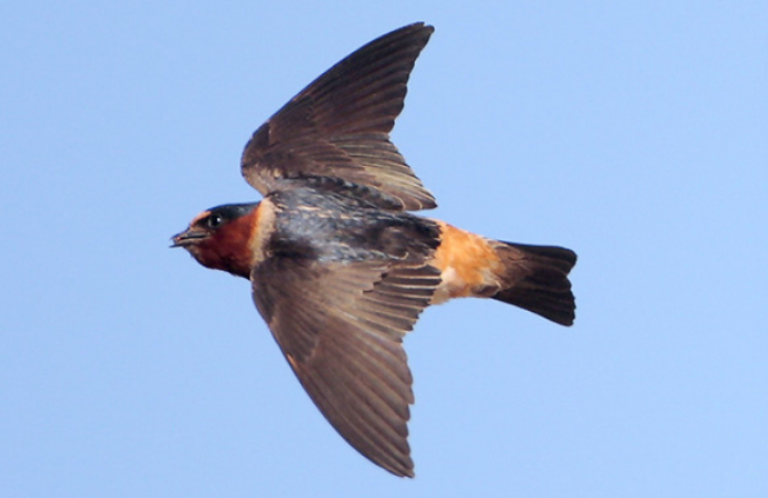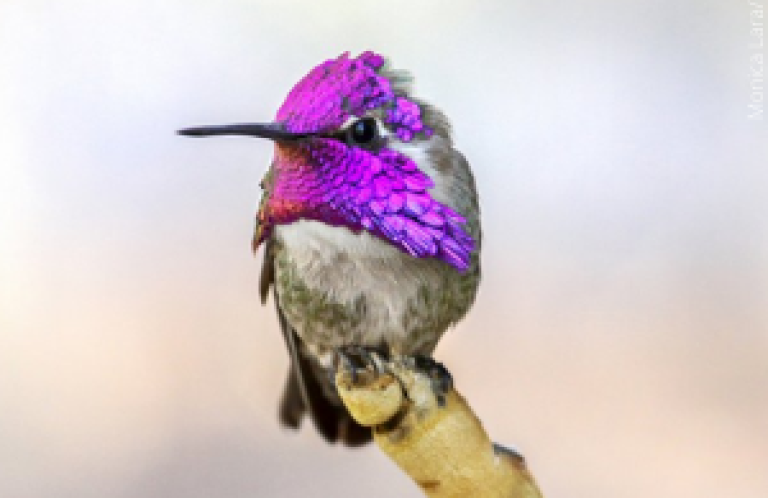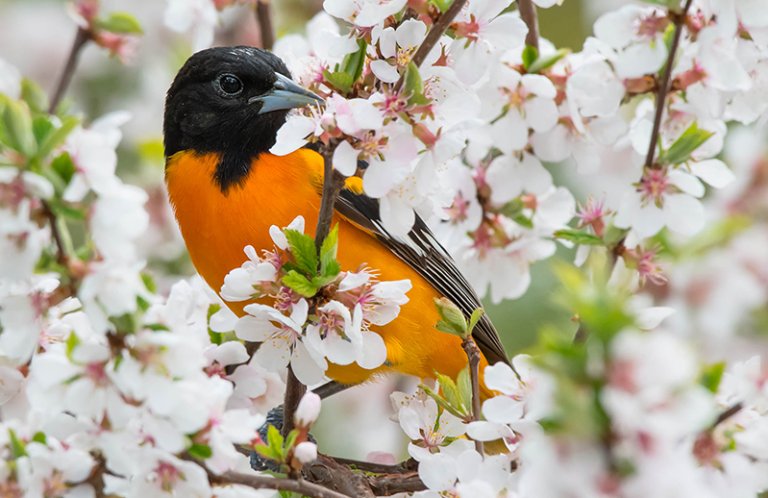Jewels of Spring: Meet Ten Warblers ABC is Working to Conserve
The Eastern wood-warblers (family Parulidae) are among the birds most beloved by North American birders. It's not hard to understand why — they can be found in a range of habitats, sing distinctive songs and often sport bright colors, and many are long-distance migrants whose return to the continent is a welcome sign of spring. This family has more than 100 members found across the globe, but to celebrate spring migration, we've highlighted ten species found in the Americas that American Bird Conservancy (ABC) is working to conserve, from imperiled habitat specialists to adaptable species found across the continent. We hope they'll inspire you to go outside and find a few returning migrants of your own!
Black-and-white Warbler

Sometimes nicknamed the “zebra” warbler for its black and white stripes, the Black-and-white Warbler creeps up and down tree trunks like a nuthatch, searching for insects and other arthropods. Birders often find these warblers by listening for their song, which sounds a bit like a squeaky wheel. They breed in forested areas in much of the eastern U.S. and Canada, and during North American winter they can be found from the southern U.S. to northern South America. Like the Common Yellowthroat, Black-and-white Warblers are frequent victims of window collisions, especially during migration season.
Blackpoll Warbler

Blackpoll Warblers get their name from the black crown and forehead patch that is part of males' breeding plumage (“poll” is an old word referring to the top of one's head). They nest in coniferous boreal forests in New England, Canada, and Alaska, and spend the nonbreeding season in the Amazon Basin of South America. Using tracking technology, researchers recently learned the astounding way they get from one area to the other. In fall, these tiny birds make nonstop flights from New England to South America, flying over the open water of the Atlantic Ocean for several continuous days.
Cerulean Warbler
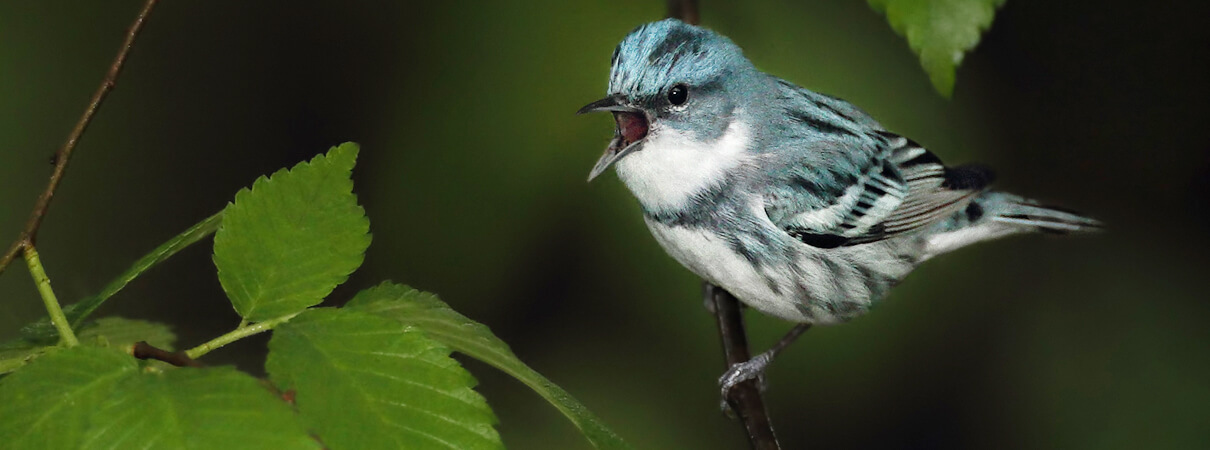
Cerulean Warblers are named for the males' sky-blue plumage. They breed in mature forests from Wisconsin south to Tennessee and east to New York, migrating all the way to the Andes of South America. Like many warbler species, they forage high in the treetops, making them difficult to spot. Threatened by habitat loss and fragmentation in both their breeding and nonbreeding ranges, this species has declined by 70 percent in the last 40 years, and ABC is active in habitat conservation efforts at both ends of their annual cycle.
Common Yellowthroat
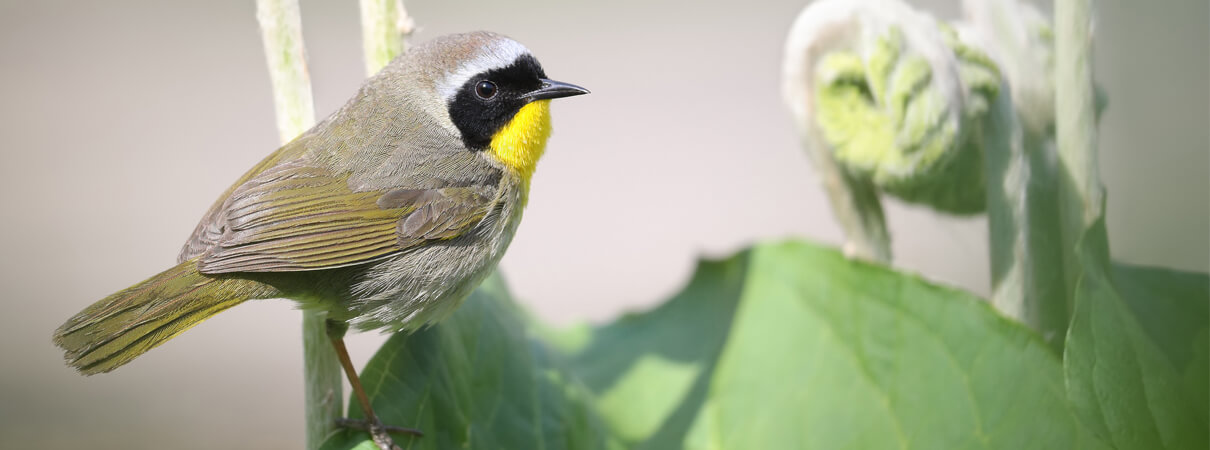
Because they nest in dense vegetation, Common Yellowthroats can be hard to spot, but listen for their “witchity, witchity, witchity!” song. Both sexes are olive overall with a yellow throat, and males also sport a black “bandit” mask. They breed across large swaths of North America, often near wetlands, and spend the nonbreeding season primarily in Mexico, Central America, and the Caribbean; some populations are sedentary and do not migrate. Common Yellowthroats are an especially frequent victim of window collisions, an issue ABC is working to address.
Golden-winged Warbler
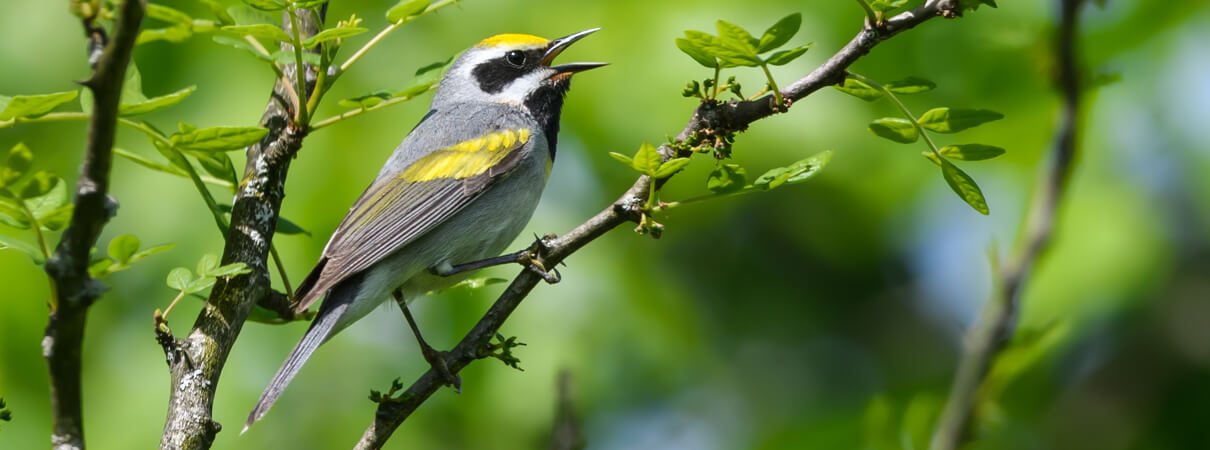
Golden-winged Warblers have chickadee-like black bibs and masks, with splashes of yellow on their crowns and wings. They breed in shrubby habitat from the Appalachian Mountains up to the northeastern and upper midwestern U.S. and southeastern Canada. Golden-winged Warblers are threatened by hybridization with Blue-winged Warblers — as Blue-winged Warblers move north into Golden-winged Warblers' range, the two species are interbreeding, and Golden-winged Warblers risk being completely “swamped” by the genetics of their more numerous cousins. ABC is involved with habitat conservation for this species both in its breeding range in the U.S. and its nonbreeding range in Central and South American countries like Colombia and Honduras.
Kirtland's Warbler
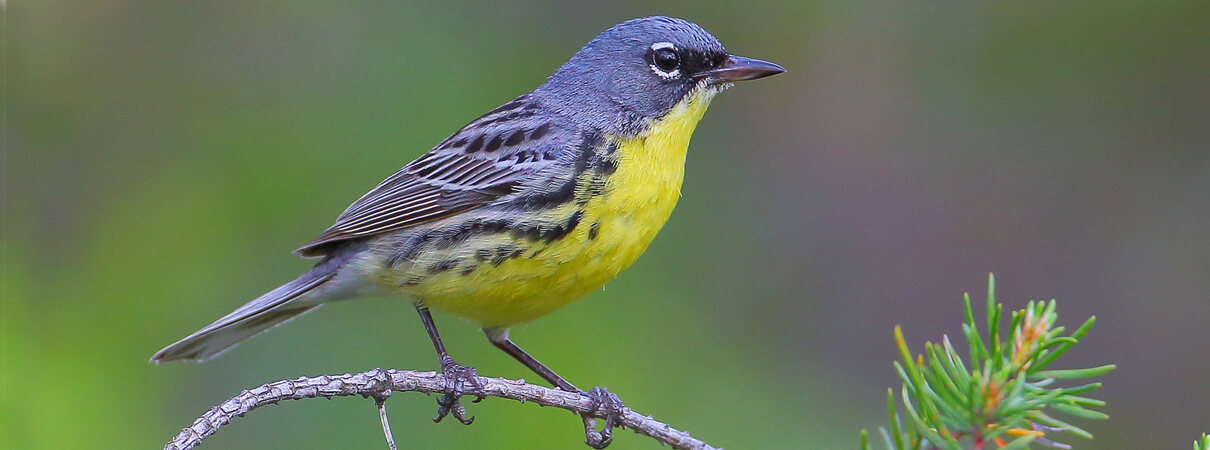
Blue-gray with black streaks above and yellow below, Kirtland's Warblers nest in stands of young jack pine trees on sandy soils, primarily in Michigan, and migrate to the Bahamas in winter. Their specialized habitat needs make them vulnerable to habitat loss, and after decades of declines, Kirtland's Warblers were one of the first species listed under the Endangered Species Preservation Act in 1967. However, thanks to years of conservation efforts (including efforts carried out by ABC), their populations have significantly recovered. They were delisted in 2019.
Prairie Warbler
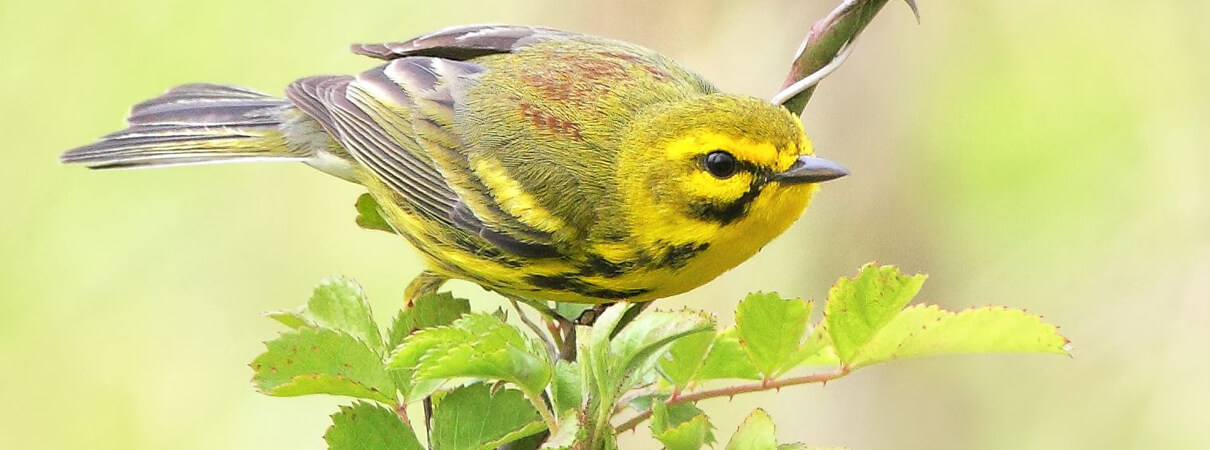
Don't search for Prairie Warblers on the prairie — they nest in shrubby habitat and open woodlands throughout much of the eastern and southeastern U.S. (The term “prairie” used to refer to a habitat type that we would now call a “barrens.”) Yellow and olive with bold black facial markings for the males and similar but more subtle plumage for the females, Prairie Warblers winter in Florida and the Caribbean. In recent decades, Prairie Warbler populations have declined sharply due to habitat loss, but ABC and partners are hard at work restoring habitat for this species.
Prothonotary Warbler

Prothonotary Warblers' sunny yellow plumage has earned them the nickname “swamp canary.” One of the only cavity-nesting warblers, they often use cavities originally excavated by Downy Woodpeckers but will also use nest boxes. They prefer to breed in wet, wooded areas in the eastern and southern U.S., wintering along the Gulf Coast from the U.S. through Mexico and Central America and into northern South America. Happily, their populations appear stable, and ABC is involved in several projects in the southeastern U.S. and Central and South America to conserve Prothonotary Warbler habitat.
Yellow Warbler

Besides its sunny yellow color, the best way to identify the Yellow Warbler is by its song: “Sweet, sweet, I'm so sweet!” Wide-ranging and common, these warblers breed from Alaska all the way south into Mexico and winter in Central and South America, with additional nonmigratory subspecies found year-round in Florida, the Bahamas, and even the Galapagos Islands. They're often found in and around stands of willows, though some tropical subspecies nest in mangrove swamps.
Yellow-rumped Warbler

The yellow rump patch that gives the Yellow-rumped Warbler its common name has also earned it the nickname “butter-butt” from birders. Found in almost every corner of North America at some point during the year, these warblers have a flexible diet that allows them to spend the winter farther north than many of their relatives — when insects are scarce in winter, they can switch to eating berries, particularly wax myrtle. The eastern and western Yellow-rumped Warbler groups were once considered separate species, and they may be re-split in the future in light of new genetic data.
How You Can Help Warblers
Speak up for birds! Policies enacted by U.S. Congress and federal agencies, such as the Natural Resources Conservation Service and U.S. Fish and Wildlife Service, have a huge impact on America's birds and their habitats. You can help shape these rules for the better by urging lawmakers to prioritize birds, bird habitats, and bird-friendly measures. To get started, visit ABC's Action Center.
Take action: Individual actions add up and can make a real difference for the birds you love! Our list of top ways to help birds includes keeping pet cats contained, making your windows safer, and avoiding use of pesticides. Find out more and take action on our Bird-Friendly Life page.
Support conservation: ABC and our Migratory Bird Joint Venture partners have improved conservation management on more than 9.7 million acres of U.S. bird habitat — an area larger than the state of Maryland — over the last ten years. This is a monumental undertaking, requiring the support of many, and you can help by making a gift to support the work of American Bird Conservancy today.





































